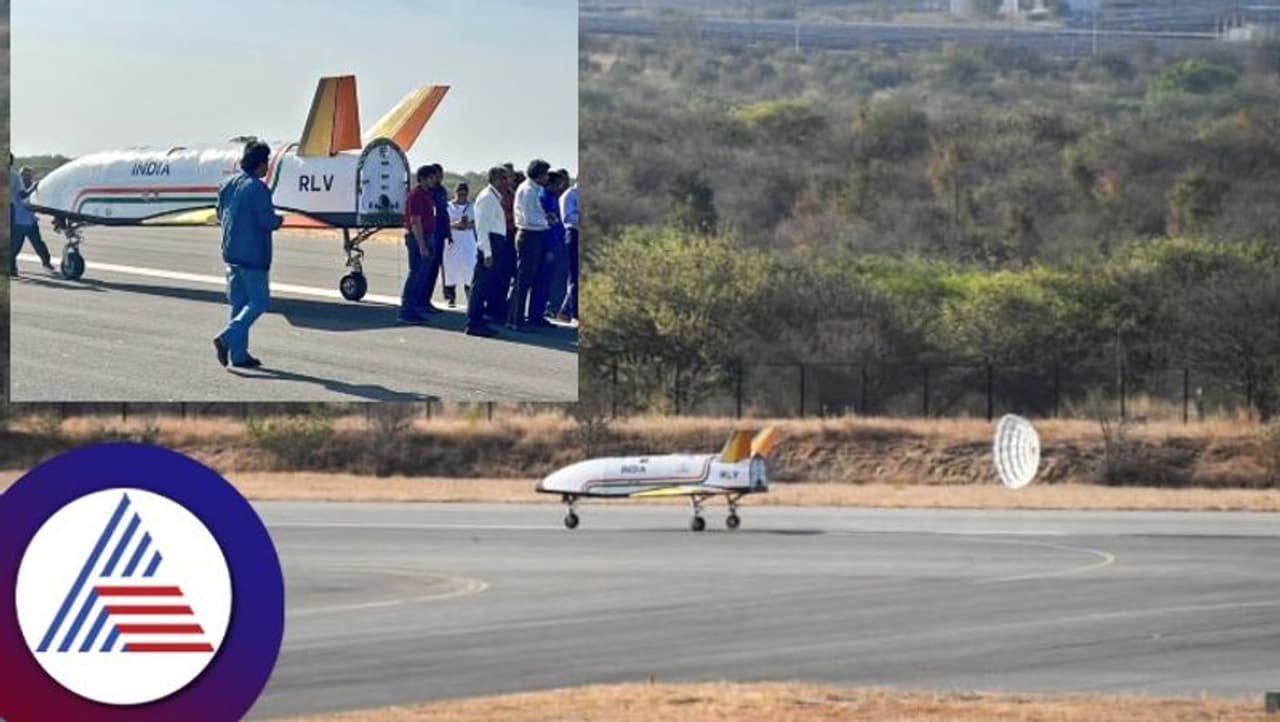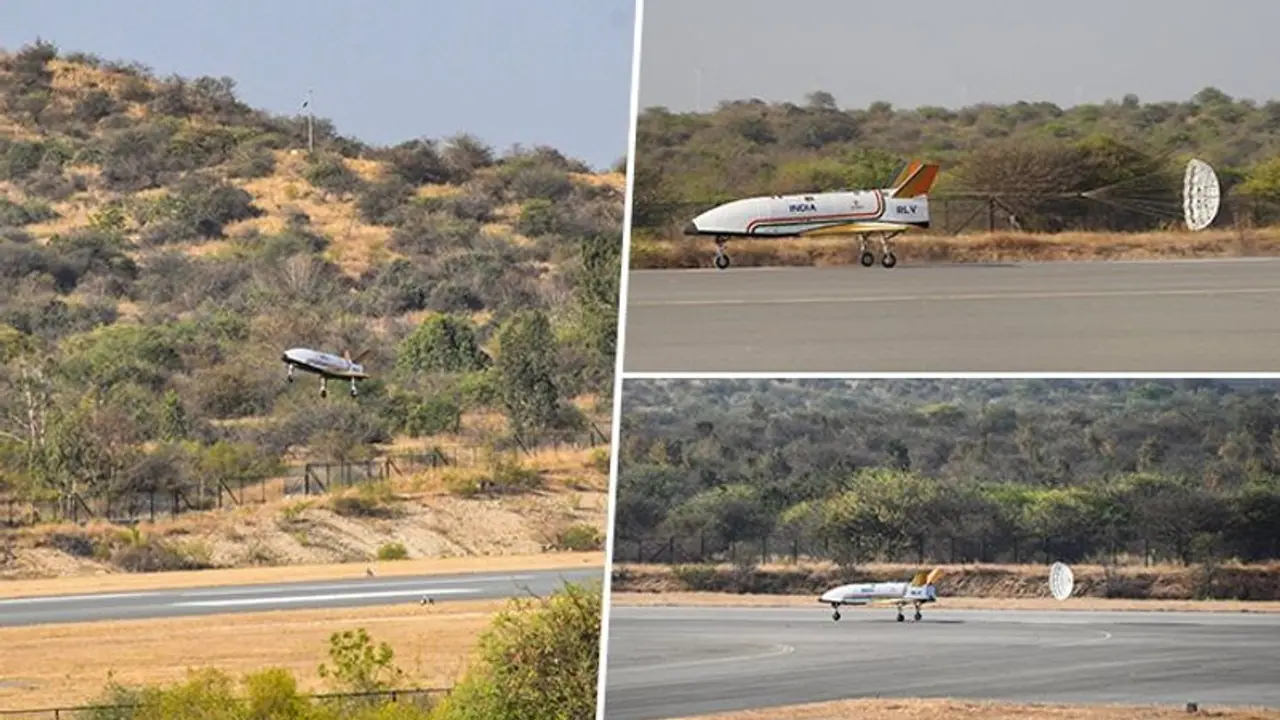The successful autonomous landing of the RLV-LEX by the ISRO marks a significant milestone in the development of reusable space vehicles and brings us one step closer to making space tourism a reality for the general public, says Defence and Aerospace Analyst Girish Linganna
On April 2, the Indian Space Research Organisation (ISRO) achieved a significant milestone in space exploration. The space agency successfully accomplished the RLV-LEX mission, which involved the autonomous landing of a Reusable Launch Vehicle (RLV LEX) at the Aeronautical Test Range (ATR) in Challakere, Chitradurga, located approximately 220 km from Bengaluru. This accomplishment marks the first time a winged object has been lifted by a helicopter to a height of 4.5km and autonomously landed on a runway.

The RLV-TD is composed of several parts, including a body, nose cap, wings, and tails. It also has control surfaces called Elevons and Rudder. The development of the RLV-TD required the use of advanced materials like alloys and composites, as well as specialized insulation materials. Skilled labour and advanced machinery were also necessary for its construction.
Major Leap in Space Exploration
According to ISRO, the RLV, which is a type of space plane, has a low lift-to-drag ratio and requires a high glide angle for approach, resulting in a landing speed of 350 kmph. The RLV-TD was utilized by the space agency for this purpose. The RLV-TD is a smaller model of the RLV technology demonstrator, and the real vehicle will be 1.6 times bigger than the one employed during the test.
At 7:10 am, the RLV was lifted by IAF's Chinook helicopter as an underslung load and ascended to a height of 4.5km. Once the predetermined pillbox parameters were met as per the RLV's mission management computer command, it was released mid-air at a down range of 4.6km.
The release was autonomous and followed strict conditions, including 10 parameters regarding position, velocity, altitude, and body rates. The RLV then independently executed approach and landing manoeuvres, utilizing the integrated navigation, guidance, and control system. It completed an autonomous landing on the airstrip at 7:40 am.
S Unnikrishnan Nair, director of the Vikram Sarabhai Space Centre (VSSC), confirmed that the mission proceeded as planned, and all parameters were successfully met.
ISRO also announced that the space vehicle achieved autonomous landing under the same conditions as a space re-entry vehicle's high-speed, unmanned, and precise landing. The landing parameters were achieved, including ground relative velocity, landing gear sink rate, and precise body rates.
ISRO's RLV-LEX utilized cutting-edge technologies such as accurate navigation hardware and software, a Pseudolite system, a Ka-band radar altimeter, indigenous landing gear, aerofoil honey-comb fins, and a brake parachute system.

India's Ambitious Plan for Space Tourism
The chairman of ISRO confirmed on April 1 that they will be participating in the competition for space tourism alongside other top US space companies. He mentioned that the cost of such a trip is expected to be approximately Rs 6 crore per tourist. The ISRO team has developed this space vehicle for private industries to take on and use for Space tourism.
The chairman also noted that the cost of a ticket in Blue Origin or Virgin Galactic is currently Rs 6 crore. He stated that if ISRO's vehicle is converted for tourist use, the cost is likely to remain the same due to the vehicle's re-usability.
Space Tourism: The Next Big Thing
Space tourism refers to the concept of commercial space travel for recreational purposes. It involves paying for a trip to space, usually beyond the Earth's atmosphere and experiencing weightlessness, the views of the Earth from space, and the opportunity to see and conduct experiments in microgravity.
The idea of space tourism has been around for decades, with the first space tourist, Dennis Tito, visiting the International Space Station in 2001. However, space tourism is still in its early stages of development, and currently, only a select few have had the opportunity to visit space, such as astronauts, researchers, and space tourists.

But with the continued expansion of space technologies and the emergence of new private space companies like SpaceX, Blue Origin, and Virgin Galactic, there is growing interest in making space tourism a reality for the general public.
The development of reusable space vehicles like the RLV-LEX by the Indian Space Research Organization (ISRO) can play a crucial role in making space tourism more accessible and affordable. The chairman of ISRO confirmed on 1st April that they will be participating in the competition for space tourism alongside other top US space companies.
He mentioned that the cost of such a trip is expected to be approximately Rs 6 crore per tourist, which is comparable to the current cost of space tourism offered by companies like Blue Origin and Virgin Galactic.
Moreover, the reusability of the RLV-LEX can significantly reduce the cost of space travel, making it more affordable and accessible to a broader range of people. The chairman also noted that if ISRO's vehicle is converted for tourist use, the cost is likely to remain the same due to the vehicle's reusability.
Space tourism has the potential to revolutionize the way we think about space exploration, as well as provide a new source of revenue for space industries. It could also lead to new advancements in space technologies and inspire a new generation of scientists and engineers to explore the final frontier.
The successful autonomous landing of the RLV-LEX by the ISRO marks a significant milestone in the development of reusable space vehicles and brings us one step closer to making space tourism a reality for the general public. While space tourism is still in its early stages of development, it has the potential to transform the way we think about space and provide new opportunities for scientific research, exploration, and adventure.
